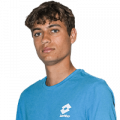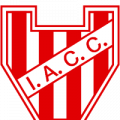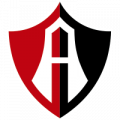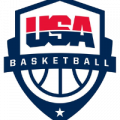With the NHL training camps beginning, we continue our look ahead to next September and the World Cup of Hockey. Roster predictions for Team Sweden can be found here. The first edition of the tournament in 1996 was an important moment for American hockey, where they defeated Canada in the final. They have since developed into one the the top hockey nations, yet they have not won and international best-on-best tournament since. They will be hoping to win another one twenty years later.
Here is what the roster could be, using the same number of players allowed at the Olympics. Players are more or less listed based on their likely position on the team depth chart, though some of those choices are essentially a toss-up and many will move up and down more based on chemistry than skill. Note any ages listed are as of October 1st 2015. No players will will be under 24 years old are included, because they are only eligible for the Young Stars team, hence the absence of players like Jack Eichel and Johnny Gaudreau.
[Update: this article was written with the assumption that rosters would be Olympic-sized (25 players). They will in fact have 23 players, so defenseman Erik Johnson and forward David Backes should be considered bubble players as opposed to extra skaters.]
Goalies (3)
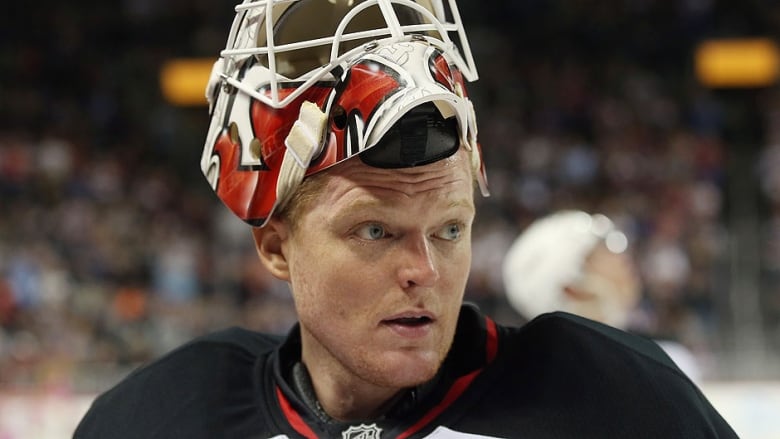
Jonathan Quick, LA Kings—Though Quick’s regular season performance the last few seasons is concerning, he has come up big in plenty of important high-pressure games in the past and has championship experience. He is the incumbent starter until someone outperforms him.
Ben Bishop, Tampa Bay Lightning—Provided he can stay healthy, he has played well enough in his time in Tampa Bay to have close to a sure spot on this team. He was a Vezina finalist in 2013-14 and played in the Stanley Cup Final last season.
Cory Schneider, New Jersey Devils—Schneider might not get much appreciation playing for the currently fairly bad Devils, but he has been quietly great the past few seasons, including a 2.26 GAA and .925 save percentage in 69 games last year. Both he and Bishop have the talent to win the starting job if they get a chance.
On the bubble—Craig Anderson, Jimmy Howard, Ryan Miller.
Defensemen (8)
Ryan Suter, Minnesota Wild—Suter led the American blue line in Sochi and should do it again as one half of the top defense pair. He is a total workhorse and a model of consistency with the Wild.
Ryan McDonagh, New York Rangers—McDonagh is another absolute lock on defense and should play big minutes for the USA. The Rangers captain is a left shot and typically plays on the left side, but switched to right in Sochi to play with Suter, who is also a left shot and was effective. He could do it again to form an excellent shutdown pairing, or the two could be split up and paired with right shot players.
John Carlson, Washington Capitals—Though not as well known as a certain Swede with a similar name, Carlson is a very good defender. He is a right shot who finished fifth in scoring at his position last season and could play with Suter or McDonagh should they not play together.
Kevin Shattenkirk, St. Louis Blues—Shattenkirk looked like Mark Giordano's main competition for the Norris trophy last season before both became injured and Erik Karlsson got a new coach and competent defense partner. He had 44 points in 56 games and could play in the top for on the right with Carlson. He should be the power play quarterback.
Justin Faulk, Carolina Hurricanes—Though he certainly should not have been an All Star ahead of Karlsson and P.K. Subban, Faulk is an underrated and talented young player. He had 54.77% Corsi For last season and had +3.94% Corsi relative to his teammates at even strength, according to war-on-ice.com. He was the seventh defenseman in Sochi, but will likely get more use this time around.
Keith Yandle, New York Rangers—Yandle probably should have been a member of the team in Sochi and Dean Lombardi will make sure he isn't snubbed again. As a member of the Olympic selection committee, Lombardi fought for Yandle, submitting an extenstive report arguing for his inclusion to the other GMs. He is a offensive player who produces and drives possession and will get powerplay time.
Dustin Byfuglien, Winnepeg Jets—Byfuglien is a big, strong and versatile player with a mean streak, who can player wing as well as forward. The selection committee may not have room for both him and Yandle, with the offensively-gifted Shattenkirk also included, however.
Erik Johnson, Colorado Avalanche—Despite missing time with injury last season, Johnson had a bounce-back year. What should be a better performance from his Avalanche will help his case, though there will be a lot of competition for his spot.
On the bubble—Cam Fowler, Nick Leddy, Paul Martin, and Alex Goligoski.
Centers
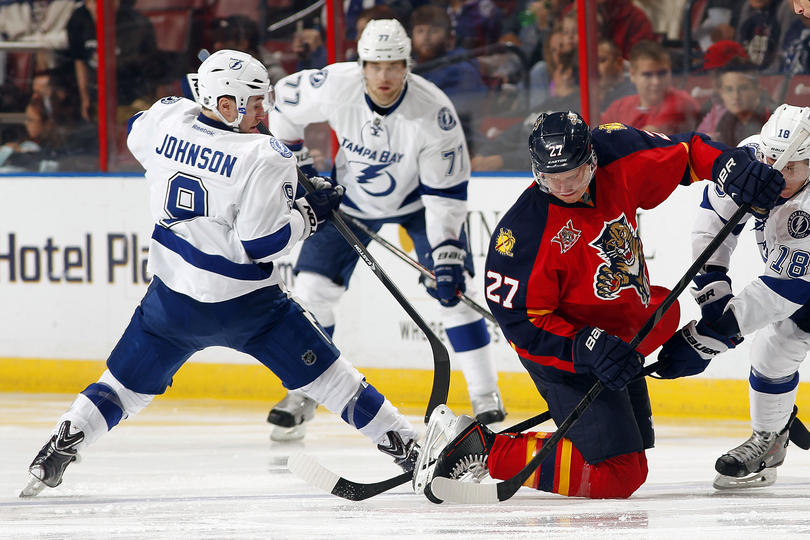
Tyler Johnson, Tampa Bay Lightning—What a difference a year can make. Though he wasn’t even considered for the Olympic team in 2014, Johnson is a lock for this team. He’s tenacious, speedy and skilled and he scored at nearly a point per game last season.
Ryan Kesler, Anaheim Ducks—This two-time Olympian is a physical center known for his excellent defensive play and knack for raising the bar in the post-season. In other words, everything GM Lombardi and advisor Brian Burke love. He's a shoe-in.
Derek Stepan, New York Rangers—An extra forward in Sochi, Stepan should be given a bigger role this time around. He has be steadily improving every year, with 55 points in 68 games last season, which translates to nearly 70 points over 82 games.
Nick Bjugstad, Florida Panthers—Six and a half feet and coming off a 24 goal, 43 point sophmore season for the goal-starved Panthers, Bjugstad may be left off for a more veteran player, but he probably shouldn't be. He has a good shot to hit 30 goals this year and size that should having the Team USA brass salivating.
David Backes, St. Louis Blues—Another big center at 6'3" and 221 lbs, Backes has toughness and defensive smarts, along with leadership and loads of experience.
On the bubble—Paul Statsny.
Left Wingers
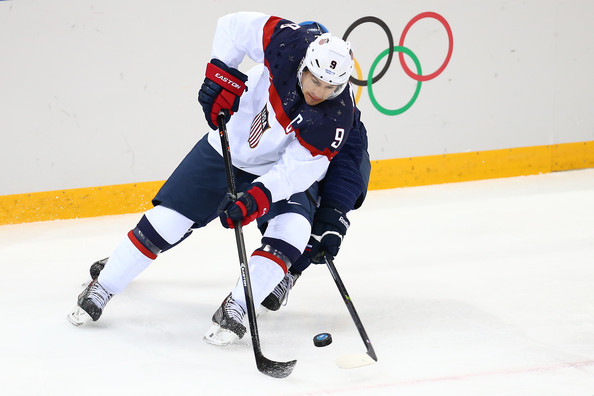
Feb. 12, 2014 - Source: Streeter Lecka/Getty Images Europe)
Zach Parise, Minnesota Wild—Parise was the captain at the Olympics and plays a strong two-way game. He has averaged over 34 goals over the last seven seasons, which is a testament to his impressive consistency.
Max Pacioretty, Montreal Canadiens—Pacioretty is one of the best goal-scorers in the NHL. His 37 goals last season were the fifth-most in the league and he ranks even better over the last two seasons, with the third most goals of any player. Along with Parise, who had one goal in six games, Pacioretty will be expected to improve on his Sochi performance. He did not score in five games.
James van Riemsdyk, Toronto Maple Leafs—The 26 year old had 57 goals over the past two seasons, with 27 this past year. Though those totals will likely take a hit with Phil Kessel gone from Toronto, they combined to form a dangerous offensive weapon in Sochi, finishing second and first in team scoring, respectively, and could be reunited for this tournament.
Chris Kreider, New York Rangers—Kreider provides extra speed and power to the team. He had 21 goals last year and could be a threat for 30 this season.
On the bubble—Anders Lee and Nick Foligno (if he proves last year was no fluke and does it again he could jump past Van Riemsdyk).
Right Wingers
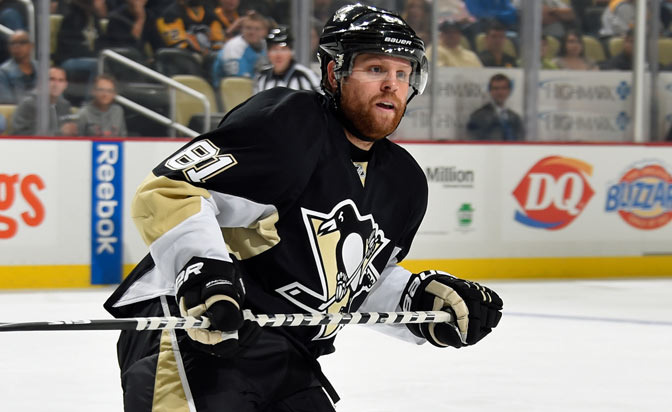
Phil Kessel, Pittsburg Penguins—Kessel lead the American team in scoring at the last Olympics, tying with the Ottawa Senators' stud Swedish defenseman Erik Karlsson for the tournament lead. He has been one of the most productive players over the past few seasons with little offensive help in Toronto. Now he gets Sidney Crosby and Evgeny Malkin.
Patrick Kane, Chicago Blackhawks—This one comes down to Kane's legal status next fall. He's a lock for the team if available, but if charges are laid as a result of current sexual assault investigation against him.
Joe Pavelski, San Jose Sharks—One of the most versatile players on the team, Pavelski can play all three forward positions. He has scored 35+ goals for two seasons spending significant time on Joe Thorton's right side, so that's where he is placed on this roster.
Blake Wheeler, Winnepeg Jets—Wheeler played a very small role in Sochi, averaging just under five minutes a game, while playing all six games. He's improve a lot since, however, becoming a true power forward. He scored 26 goals and 61 points last season.
T.J. Oshie, Washington Capitals—Oshie was the hero at the Olympics with an amazing shoot out performance against Russia in the preliminary round, but may be an extra forward after improvements from other players. Or he may have a big season playing with Alexander Ovechkin. Time will tell.
On the bubble—Bobby Ryan, Ryan Callahan, and Kyle Okposo.
Exciting Potential Combinations
The most important change from the 2014 Olympic team will be the addition of the dynamic Tyler Johnson. He will form a potent offensive line with whoever he centres, likely some combination of Parise or Pacioretty on the left and Kessel or Kane (assuming he is available) on the right.














